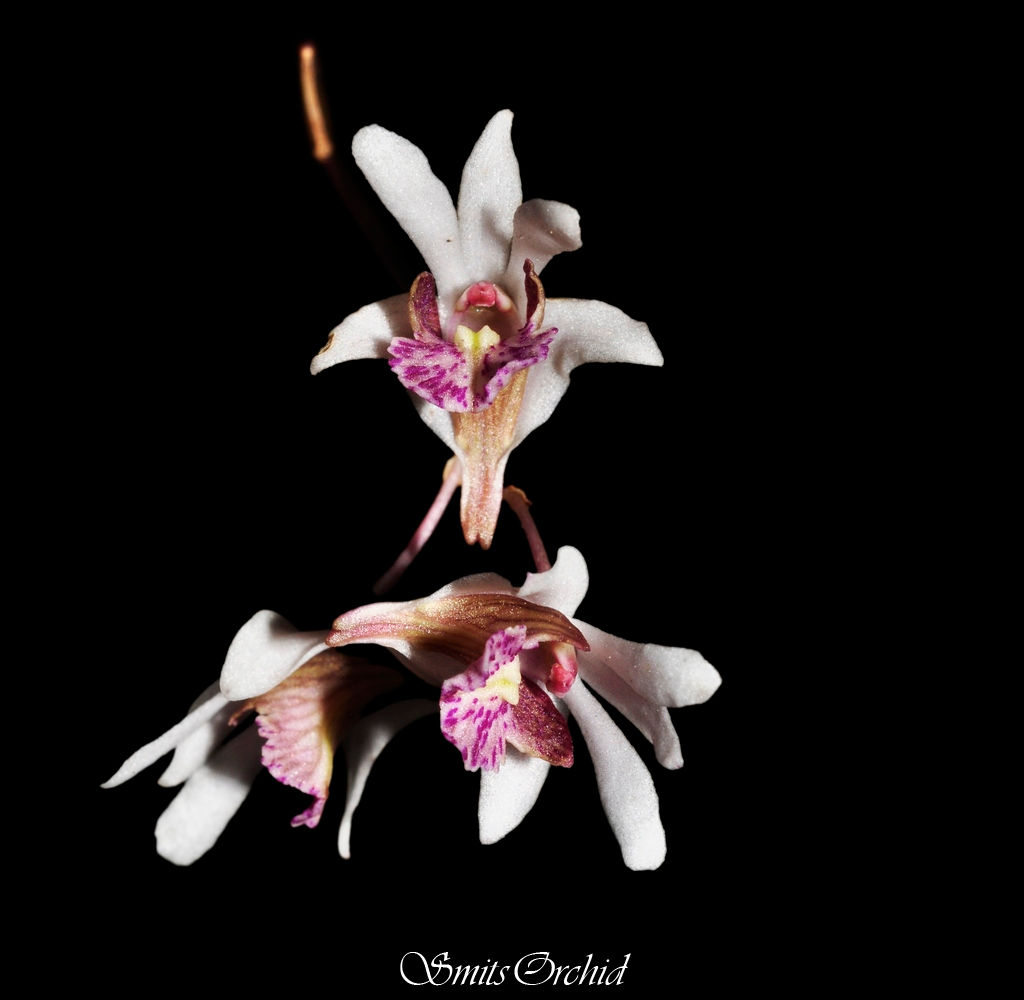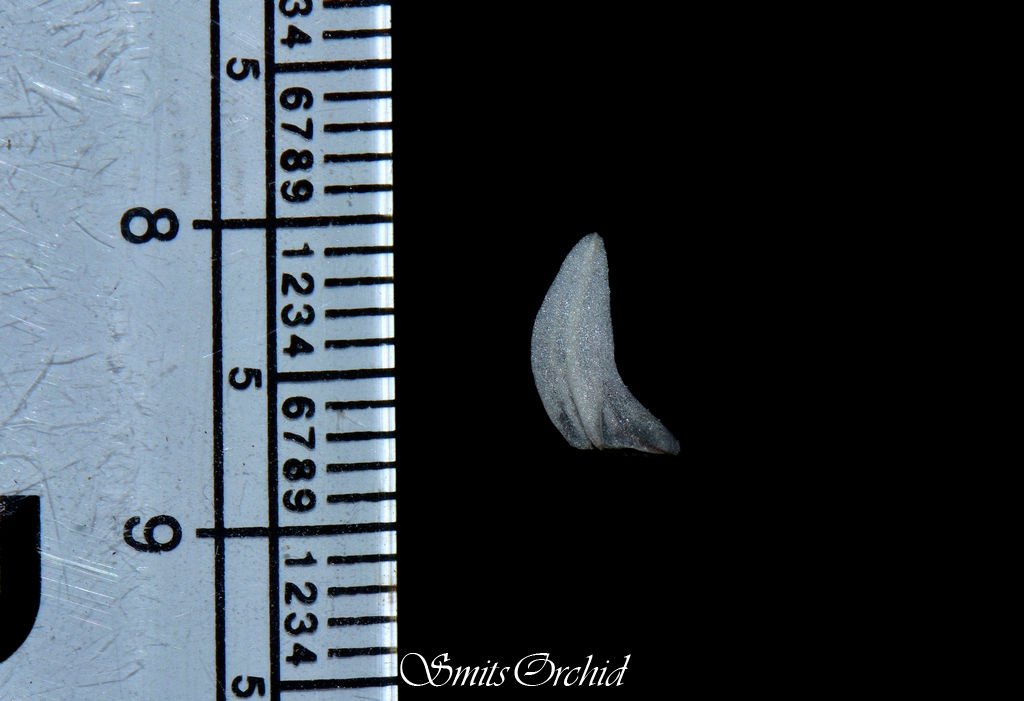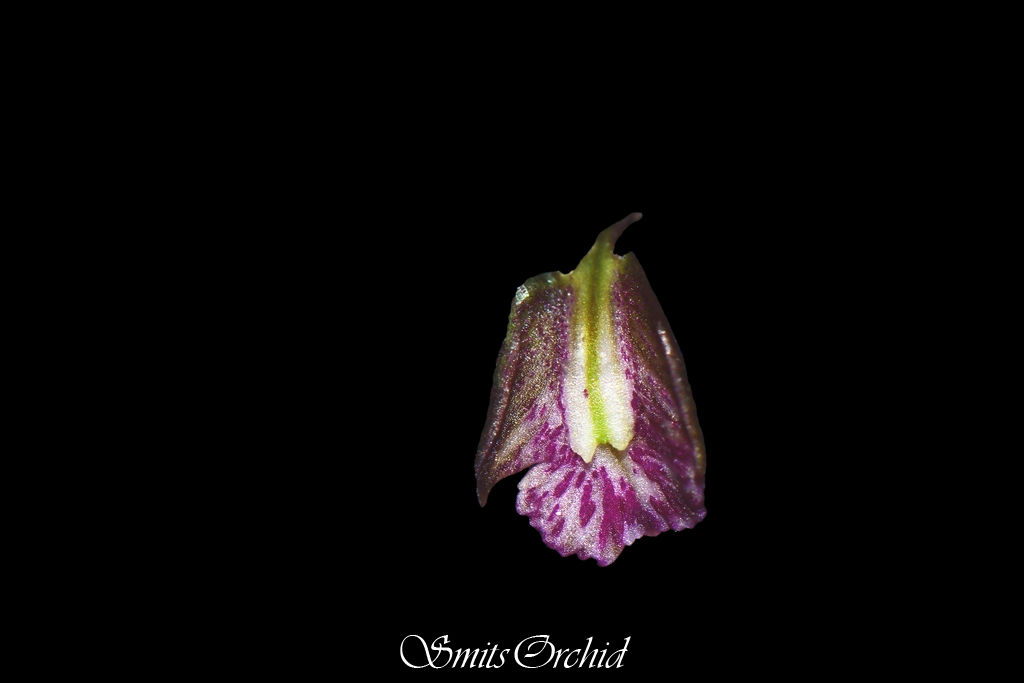
Sub family Epidendroideae
Tribe Dendrobieae
Derivation of name From the Greek dendron, tree, and bios, life, referring to the epi phytic habit of most Dendrobium species.Epiphytic, lithophytic, or rarely terrestrial herbs,
Roots terete, glabrous or papillose-warty.
Stems cane-like or having pseudobulbous , glabrous to hirsute. Stem fleshy or not, branching or not, long-lived, entirely or partially covered by leaf sheaths if present.
Pseudobulbs consisting of one to many internodes.
Leaves One to many, conduplicate, usually articulate, with or without a tubular leaf sheath, distichous, dorsiventrally flattened, bilaterally flattened or terete, margins entire.
Inflorescence lateral or terminal, usually arising from a mature shoot, one-flowered or racemose, rarely paniculate, sometimes fasciculate.
Flowers resupinate or not, ephemeral to long-lasting, distichous, secund or helically arranged, usually fragrant.
Sepals entire, rarely fimbriate or lacerate margin, free or variously connate, lateral sepals similar or dissimilar to the dorsal sepal and usually forming a mentum together with column foot, mentum sometimes slender and spur-like.
Petals entire, rarely fimbriate or lacerate, free, similar to the dorsal sepal or strongly dissimilar.
Labellum adnate to apex of column foot and then rigidly attached (will break off when bent downwards), flexibly attached (can be bent downwards without breaking off), or rarely hinged and highly mobile, entire or lobed, with or without keels and/or callosities, not spurred but often forming a spur-like structure with column foot called mentum.
Column usually straight, without lateral wings, rarely with apical stelidia; column foot well-developed, often with a cavity or a shallowly concave area at apex; anther helmet-shaped, two-locular, glabrous or papillose hairy, pollinia 4, oblong, triangular in cross-section, hard-waxy, strongly cohering in two subequal pairs, without caudicles, usually yellow, sometimes brown, purplish or grey; stigma a ventral concavity on the column, sometimes raised and callus-like; rostellum simple or sometimes bilobed, viscidium usually absent but, when present, shapeless, often with a downwardly projecting, rigid, truncate or emarginate lamella between rostellum and stigma (the ‘scraper’).
Ovary and pedicel terete or winged, sometimes papillose or hairy.
Capsule ellipsoid, oblong, obovoid to subglobose, unilocular, sometimes winged or triangular in cross-section, usually opening along three longitudinal slits, sometimes with a single opening near the apex, without endocarpic elaters.
Dendrobium Sw.

I. Dendrobium sect. Stachyobium (Lindl) Kraenzl. 1910
Pseudobulbs clustered, fleshy, variable in shape, sometimes hardly swollen and cane-like, leafy throughout or with leaves in apical part only, not branching, with limited apical growth.
Leaves with a tubular sheath at base, short-lived.
Inflorescences elongate usually with wiry peduncle and rachis, erect or patent, sometimes pendulous, few- to many-flowered, arising apically and laterally from leafy shoots of current growing season, often while shoot is not fully grown, or sometimes when shoot has barely developed; often with three or more inflorescences arising from the same shoot simultaneously.
Flowers often whitish with green or purplish markings on labellum; mentum well-developed, coni cal.
Labellum flexibly hinged with column foot, usually trilobed, with lamellate keels basally, or with a flattened, rod-shaped callus often lobed at apex, the midlobe often with undulate mar gins, sometimes with numerous clavate appendages.
This section is represented by two species in Sindhudurg district

Dendrobium microbulbon A.Rich.
in Ann. Sci. Nat., Bot., sér. 2, 15: 19 (1841)
Callista microbulbon (A.Rich.) Kuntze in Revis. Gen. Pl. 2: 655 (1891)

Ecology Small epiphytes on Catunaregam spinosa in evergreen forest.
This species is endemic to Western Ghats and was at Amboli Chowkul Road.

Pseudobulbs: 1-2x1 cm, crowded, mauve-brown, leafless at the time of flowering and covered with a network of fibres formed by the decayed membranous sheaths, conical, 1-3-jointed.
Leaves: caducous, appearing in the monsoon before the flowers, rarely with them; 2-14 x0.3-1.3 cm, sessile, sheathing at the base, thin, linear lanceolate to oblong-Ianceolate, acute, entire, I-nerved.

Inflorescence in racemes 1.5-10 cm long, erect, 1-3 arising from the terminal portion of the pseudobulb; peduncles 1-6 cm long, purplish brown, slender with a few oblong, acute, membranous pale brown sheaths.

Flowers 10-12x7-8 mm, faintly perfumed, pedicellate.
Bracts 2-3 x 1 mm scaly, membranous, light brown, semi-amplexicaul, ovate-lanceolate, acute, entire, glabrous, 1-nerved.
Pedicel with ovary 7-10 mm long, pale brownish green, glabrous, faintly grooved above.

Sepals white, entire, glabrous ; midnerve prominent, lateral pair faint ; dorsal sepal 4-6 x2 mm, slightly shorter than the petals, erect, linear-lanceolate, rarely somewhat dilated a little beyond the middle, subacute ; lateral sepals 5-7 X3-4 mm, spreading, broad at the base to form the mentum, falcate, acute or subacute, somewhat recurved ; mentum 6 x4 mm, broadly infundibuliform at the mouth, narrowed to a fine, slightly up turned purplish apex, white flushed with purple downwards.

Petals 8 x 1.5 mm, white, spathulate or oblanceolate, subacute or obtuse, entire, glabrous, faintly 3-nerved.
Labellum 4 x 5-5.5 mm, fused for about 1-2 mm to the apex of the foot, curved, clawed 3-lobed ; claw narrow, 2 mm long, pale mauve; lateral lobes 5 x 1 mm, erect, more or less parallel with the column, linear, acute, entire, pale purplish green with many purple nerves on the inside; midlobe 2x4 mm, white flushed with pink-purple with a few deeper-coloured nerves, transversely oblong orbicular, truncate or slightly retuse at the apex, margins irregularly denticulate ; disc narrow, pale green, with 3 green parallel nerves, teminated by a slightly widened, free, 2-lobed callus.

Column 2 x1.5 mm pale mauve-green, produced below into a 6 mm long, pale purple, shallowly grooved foot; lateral arms white, acute.
Anther very small, pink-purple, suborbicular; pollinia 4, waxy, linear, yellow. Stigmatic surface pale green lined with purple-brown.

Capsules 10 x 6 mm, ovoid; pedicels 3-5 mm long, slender.
Leaves: July to October.
Flowering: January.
Fruiting: February to May



















